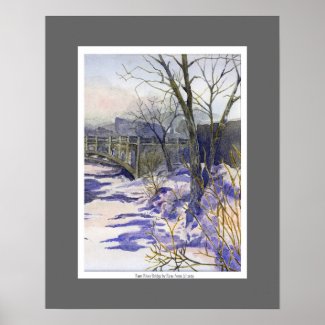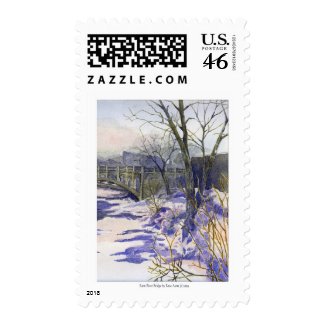Rum River Bridge Poster at Zazzle
Discover which three primary colors mixed together will create a true grey or a shade of brown.
Begin by selecting your truest red, yellow and blue. Then, start making a color mixing chart, labeling each color as you mix. Mix red with yellow to create varieties of orange, yellow and blue to create varieties of green and blue and red to create varieties of violet.
Then start mixing the compliments to create varieties of Grey, which are used for the shadow colors in your paintings. Mix orange with blue to creates shades of orange and blue, mix green with red to create shades of red and green and mix violet with yellow to create shades of violet and yellow.
Below is my limited palette color mixing chart that I created using three different reds, Cadmium Red, Brilliant Red & Crimson, three different blues, Ultramarine Blue, Cobalt Blue and Phalo Blue, and three different yellows, Medium Yellow, Lemon Yellow and Yellow Ochre. As you can see, each has their own strengths and weaknesses, it is up to you to decide what colors to add to your palette.
When you have discovered your limited palette choices, you are ready to get started.
Rum River Bridge Poster at Zazzle
Rum River Bridge Postage



No comments:
Post a Comment